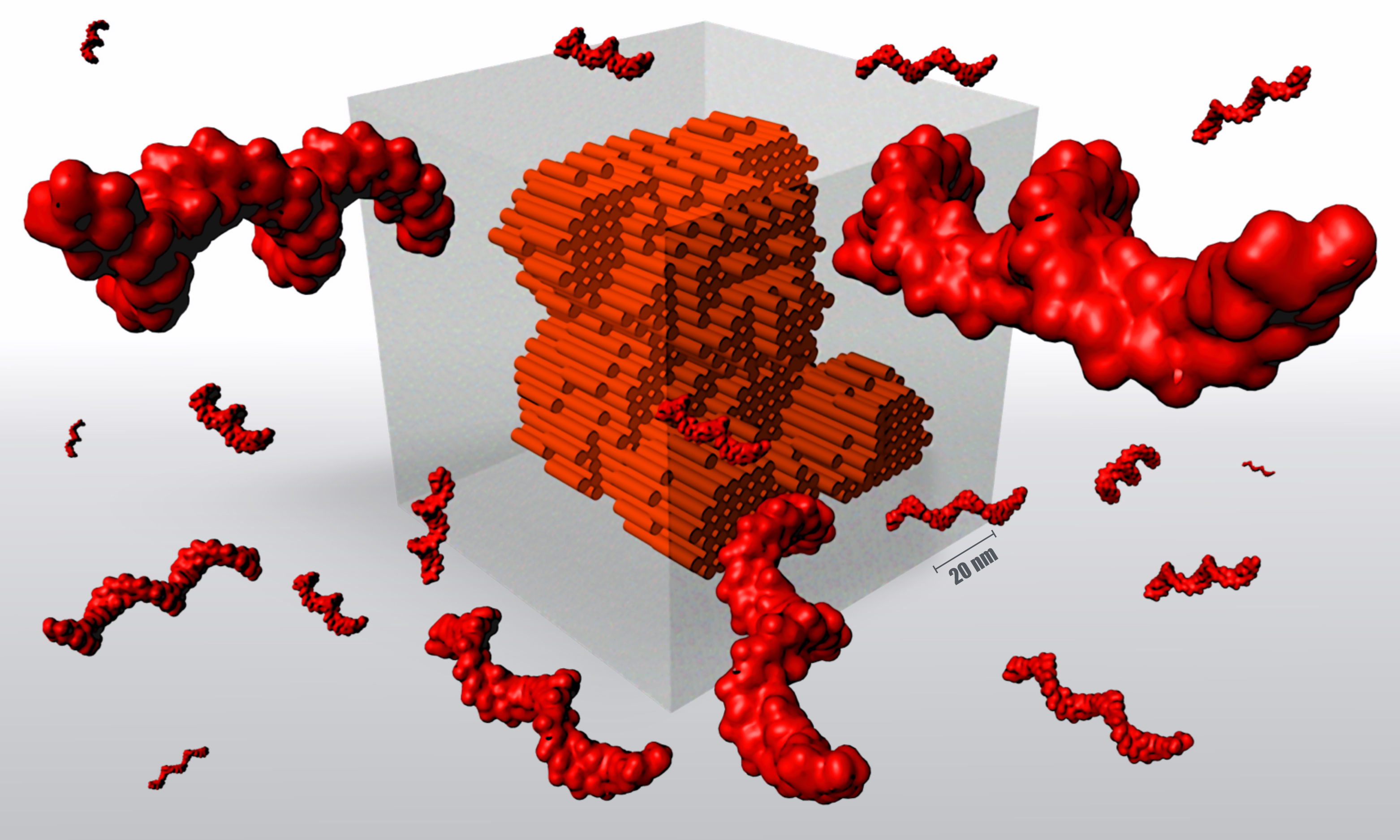
NANOSTRUCTURES 3D À BASE D’ADN : VERS PLUS DE SOPHISTICATION
Les “nanotechnologies d’ADN” utilisent la molécule d’ADN comme matériau de construction pour créer des nano-objets 3D avec des propriétés de plus en plus spécifiques. Par exemple, il est possible de créer des cargos moléculaires qui se déplacent d’un point “A” vers un point “B” (DNA walkers), des nano-capsules qui permettent de délivrer un médicament vers une cellule cible (DNA boxes) ou encore des nano-objets avec des architectures 3D pour de nouvelles applications en photonique et électronique.
Toutefois, cette technologie se heurtait jusqu’à présent à un obstacle : programmer suffisamment de séquences d'ADN pour créer des objets de plus en plus sophistiqués. Grâce à un travail collaboratif publié dans la revue Nature, Dr. Peng Yin (Harvard University, Boston), Dr. Yonggang Ke (Georgia Tech, Atlanta) et Dr. Gaëtan BELLOT (IGF, Equipe G. Lebon, Montpellier) ont élaboré une nouvelle méthode permettant de franchir un cap dans la conception de nanostructures complexes.
Désormais, il devient possible de fabriquer des nanostructures à partir d’un million de bases d'ADN (comparable à la taille du génome de certaines bactéries), alors que jusqu'à présent, les objets créés étaient composés d'un millier de bases seulement. Cette nouvelle méthode permet également d’automatiser l’impression d’objets nanométriques à partir de modèles 3D, façon “impression 3D”.
En bio-médecine, ceci pourra permettre la conception de nouveaux outils sophistiqués et adaptés à la taille de nos cellules.
Communiqué de Presse Inserm : Des objets 3D d’une précision inégalée obtenus à partir d’ADN
Musique vidéo par Damien Maurel (IGF)
Lien France Inter : La tête au Carré (Interview de Gaetan Bellot)
Lien France Culture 8/12/17
Lien Le Figaro
Abstract NATURE : Nucleic acids (DNA and RNA) are widely used to construct nanometre-scale structures with ever increasing complexity with possible application in fields such as structural biology, biophysics, synthetic biology and photonics. The nanostructures are formed through one-pot self-assembly, with early kilodalton-scale examples containing typically tens of unique DNA strands. The introduction of DNA origami4, which uses many staple strands to fold one long scaffold strand into a desired structure, has provided access to megadalton-scale nanostructures that contain hundreds of unique DNA strands.
Even larger DNA origami structures are possible but manufacturing and manipulating an increasingly long scaffold strand remains a challenge. An alternative and more readily scalable approach involves the assembly of DNA bricks, which each consist of four short binding domains arranged so that the bricks can interlock. This approach does not require a scaffold; instead, the short DNA brick strands self-assemble according to specific inter-brick interactions.
First-generation bricks used to create three-dimensional structures are 32 nucleotides long, consisting of four eight-nucleotide binding domains. Protocols have been designed to direct the assembly of hundreds of distinct bricks into well formed structures, but attempts to create larger structures have encountered practical challenges and had limited success9. Here we show that DNA bricks with longer, 13-nucleotide binding domains make it possible to self-assemble 0.1–1-gigadalton, three-dimensional nanostructures from tens of thousands of unique components, including a 0.5-gigadalton cuboid containing about 30,000 unique bricks and a 1-gigadalton rotationally symmetric tetramer.
We also assembled a cuboid that contains around 10,000 bricks and about 20,000 uniquely addressable, 13-base-pair ‘voxels’ that serves as a molecular canvas for three-dimensional sculpting. Complex, user-prescribed, three-dimensional cavities can be produced within this molecular canvas, enabling the creation of shapes such as letters, a helicoid and a teddy bear. We anticipate that with further optimization of structure design, strand synthesis and assembly procedure even larger structures could be accessible, which could be useful for applications such as positioning functional components.





